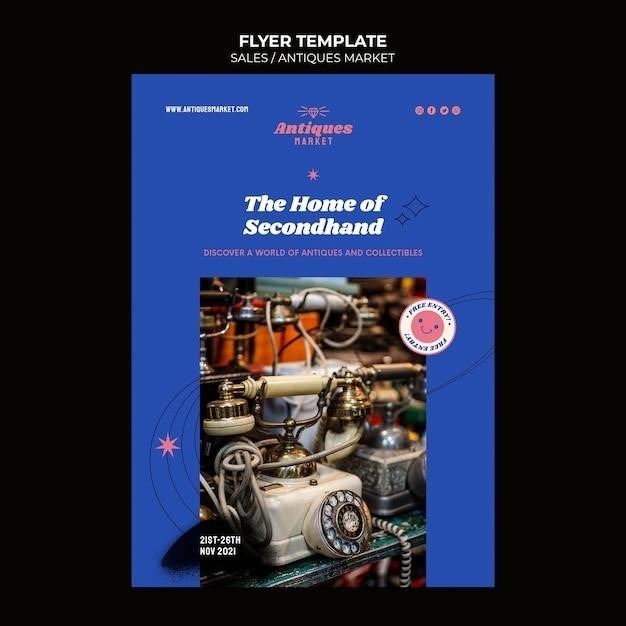craftsman air compressor owners manual
This manual provides essential information for owners of Craftsman air compressors. It covers safety precautions, assembly and operation, maintenance and storage, troubleshooting, repair parts, warranty information, model-specific details, and additional resources. The manual aims to help users understand and utilize their Craftsman air compressor safely and effectively.
Introduction
Welcome to the world of Craftsman air compressors! This comprehensive manual is your guide to understanding, operating, and maintaining your powerful and versatile air compressor. Whether you’re a seasoned professional or a DIY enthusiast, this manual will equip you with the knowledge you need to maximize your air compressor’s performance and ensure its longevity.
Craftsman air compressors are renowned for their durability, reliability, and ease of use. They are designed to handle a wide range of tasks, from inflating tires and powering air tools to cleaning surfaces and spraying paint. This manual will cover everything you need to know about your Craftsman air compressor, from its key features and specifications to its proper use and maintenance.
We strongly encourage you to read this manual thoroughly before using your Craftsman air compressor. By understanding its features, safety precautions, and operating procedures, you can ensure a safe and enjoyable experience while using your air compressor for all your projects.
Safety Precautions
Your safety is paramount when using any power tool, and your Craftsman air compressor is no exception. Please read and understand the following safety precautions to ensure a safe and enjoyable experience.
- Always wear safety glasses⁚ Compressed air can be dangerous, and flying debris can cause serious eye injuries. Protect your eyes by wearing safety glasses at all times while operating your air compressor.
- Use proper footwear⁚ Avoid wearing loose clothing or jewelry that could get caught in moving parts. Wear sturdy, closed-toe shoes to protect your feet.
- Keep work area clean⁚ A cluttered work area increases the risk of accidents. Keep your work area clean and free of obstacles.
- Use only authorized accessories⁚ Use only accessories specifically designed for your Craftsman air compressor. Using unauthorized accessories can damage your compressor and compromise your safety.
- Do not operate compressor in hazardous environments⁚ Avoid using your air compressor in flammable or explosive atmospheres.
- Never modify or tamper with the compressor⁚ Modifying your air compressor can compromise its safety and void the warranty.
- Disconnect power before servicing⁚ Always disconnect the power cord before performing any maintenance or repair work on your air compressor.
- Keep children away⁚ Never allow children to operate or play near your air compressor.
By following these safety precautions, you can minimize the risk of accidents and ensure a safe and enjoyable experience with your Craftsman air compressor.
Assembly and Operation
Assembling and operating your Craftsman air compressor is a straightforward process. This section provides step-by-step instructions to guide you through the initial setup and proper usage of your compressor.
- Unpacking and Inspection⁚ Carefully unpack your Craftsman air compressor. Ensure that all components are present and in good condition. Refer to the parts list in your manual for a complete inventory.
- Placement and Stability⁚ Choose a stable and level surface for your air compressor; Ensure it is positioned in a well-ventilated area away from any heat sources, moisture, or direct sunlight.
- Connecting Air Hose and Accessories⁚ Connect the air hose to the air compressor outlet using the quick-connect fitting. Attach the desired air tool or accessory to the other end of the air hose.
- Power Connection⁚ Connect the power cord to a properly grounded electrical outlet. Make sure the voltage and amperage ratings of the outlet match those of your air compressor.
- Starting the Compressor⁚ Turn on the power switch and allow the compressor to run until it reaches the desired pressure. The pressure gauge on the compressor tank will indicate the air pressure.
- Using Air Tools⁚ Once the air compressor is running and at the desired pressure, you can operate your air tools. Refer to the specific instructions for each air tool for proper usage and safety guidelines.
- Shutting Down the Compressor⁚ When finished, turn off the air compressor by switching off the power switch. Allow the compressor to cool down before storing it.

Always refer to your Craftsman air compressor manual for specific instructions and warnings related to your model.

Maintenance and Storage
Proper maintenance and storage are crucial for extending the life of your Craftsman air compressor; By following these guidelines, you can ensure optimal performance and prevent potential issues.
- Regular Inspections⁚ Inspect the air compressor regularly for any signs of damage, wear, or leaks; Check the air hose, fittings, and pressure gauge for any problems.
- Air Filter Maintenance⁚ The air filter should be cleaned or replaced periodically to ensure proper airflow. Refer to your manual for the recommended cleaning intervals and procedures.
- Oil Changes⁚ If your Craftsman air compressor has an oil-lubricated motor, change the oil according to the manufacturer’s recommendations. Use the correct type and viscosity of oil as specified in your manual.
- Lubrication⁚ Lubricate moving parts, such as the motor bearings and compressor pump, as recommended by the manufacturer. Use the appropriate type of lubricant for each component.
- Storage⁚ When not in use, store your Craftsman air compressor in a clean, dry, and well-ventilated area. Protect it from moisture, extreme temperatures, and dust.
- Winter Storage⁚ If you live in a region with cold winters, consider draining the water from the air tank before storing the compressor. This will help prevent freezing and damage to the tank.
- Professional Service⁚ If you notice any significant issues with your air compressor, such as excessive noise, leaks, or reduced performance, consult a qualified technician for repairs or maintenance.
Following these maintenance and storage guidelines will help you keep your Craftsman air compressor in top condition, ensuring it provides reliable service for years to come.
Troubleshooting
While Craftsman air compressors are designed for reliability, occasional issues can arise. This section provides guidance on troubleshooting common problems you may encounter. Always refer to your owner’s manual for specific model instructions and safety precautions.
- Compressor Not Running⁚ Check the power source, fuse, and circuit breaker. Ensure the power cord is properly plugged in and the switch is in the “ON” position. If the motor hums but doesn’t start, the motor might be overloaded or have a faulty starting capacitor.
- Compressor Runs but Doesn’t Build Pressure⁚ Inspect the air filter for blockage. Check for leaks in the air tank, hoses, and fittings. The pressure relief valve may be stuck open.
- Compressor Overheats⁚ Ensure adequate ventilation around the compressor. Check the oil level if applicable. Excessive use or overloading can cause overheating. Allow the compressor to cool down before restarting.
- Compressor Makes Unusual Noise⁚ Unusual noises can indicate a problem with the motor, pump, or bearings. Inspect for loose components or worn parts. If the noise persists, seek professional service.
- Pressure Gauge Fluctuations⁚ Check for leaks in the air tank, hoses, and fittings. The pressure relief valve may be malfunctioning.
- Air Tool Performance Issues⁚ If your air tools are not functioning properly, ensure the air pressure is sufficient. Check for air leaks in the air tool’s hose or fittings.
If you’re unable to resolve the issue using these troubleshooting steps, it’s recommended to contact a qualified technician for assistance.
Repair Parts
Over time, wear and tear can occur on your Craftsman air compressor, requiring replacement parts. This section provides information on obtaining repair parts and ensures a smooth repair process;
- Identifying Parts⁚ Refer to your owner’s manual for a parts diagram and a list of component names. Locate the model number and serial number of your compressor. This information is typically found on a label attached to the compressor.
- Authorized Dealers⁚ Craftsman recommends purchasing repair parts from authorized dealers or service centers. These sources provide genuine parts that are compatible with your specific compressor model and meet quality standards.
- Online Resources⁚ Many online retailers specialize in selling repair parts for Craftsman air compressors. Ensure you purchase parts from reputable sources and verify compatibility with your model.
- Sears Parts Direct⁚ Sears Parts Direct is a reliable source for Craftsman air compressor parts. They offer a wide selection, detailed part diagrams, and helpful resources to assist with part identification.
- Local Service Centers⁚ Local service centers specializing in appliance repair often carry a stock of common Craftsman air compressor parts. Contact them to inquire about availability.
When ordering parts, always provide your compressor’s model number and serial number to ensure you receive the correct components. Before attempting any repairs, ensure you have the necessary tools, knowledge, and safety precautions in place.
Warranty Information
Craftsman stands behind the quality of its air compressors and offers a warranty to protect your investment. This warranty covers defects in materials and workmanship for a specified period. To fully understand the terms and conditions of your warranty, carefully review the warranty document provided with your air compressor.
- Warranty Period⁚ The warranty period for Craftsman air compressors typically varies depending on the model and purchase date. Refer to the warranty document for the specific duration of coverage.
- Coverage⁚ The warranty typically covers defects in materials and workmanship that result in malfunctions or failures during normal use. However, it may not cover damage caused by misuse, neglect, accidents, or modifications.
- Proof of Purchase⁚ To claim a warranty, you will need to provide proof of purchase, such as a receipt or invoice. Retain this documentation for future reference.
- Authorized Service⁚ Craftsman recommends using authorized service centers for warranty repairs. These centers are trained and equipped to handle warranty claims and ensure proper repairs.
- Exclusions⁚ The warranty typically excludes coverage for wear and tear, routine maintenance, cosmetic damage, or damage caused by improper use. Review the warranty document for a complete list of exclusions.
If you experience any issues with your Craftsman air compressor during the warranty period, contact Craftsman customer service or an authorized service center. They will guide you through the warranty claim process.
Model Specific Information
Each Craftsman air compressor model possesses unique features and specifications tailored to specific needs and applications. This section provides essential information about your particular Craftsman air compressor model, helping you understand its capabilities and limitations.
- Model Number⁚ Locate the model number of your Craftsman air compressor. This number is usually found on a label attached to the air tank or compressor unit. The model number is crucial for identifying the correct parts, manuals, and warranty information.
- Tank Capacity⁚ The tank capacity, measured in gallons, indicates the amount of compressed air the tank can store. A larger tank capacity allows for longer run times between compressor cycles, ideal for demanding tasks or multiple tool usage.
- Horsepower (HP)⁚ The horsepower rating of the motor determines the compressor’s power output. A higher horsepower rating indicates a more powerful compressor capable of handling heavier-duty applications and delivering higher air flow.
- Pressure⁚ The maximum pressure the compressor can generate is typically measured in pounds per square inch (PSI). This information helps determine the suitability of the compressor for specific air tools and applications.
- Air Flow⁚ Air flow, measured in cubic feet per minute (CFM), indicates the volume of compressed air the compressor can deliver. Higher CFM ratings are ideal for applications requiring large volumes of air, such as spray painting or operating multiple air tools.
- Duty Cycle⁚ The duty cycle refers to the percentage of time the compressor can run without overheating. A higher duty cycle indicates a more robust compressor suitable for continuous operation.
Understanding these model-specific details will allow you to properly use and maintain your Craftsman air compressor for optimal performance.
